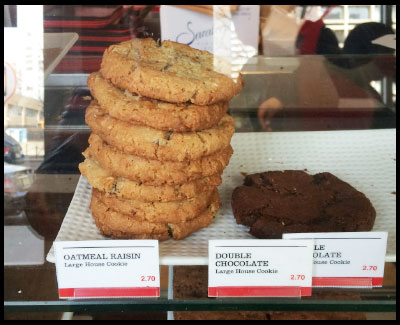Information, Meaning, Perception & Truth
Sometimes I get a question about information architecture that excites me so much that I feel the need to write long form rather than edit my answer down to 140 characters. A recent question from Kate Williamson was one of those questions.
..wondering how you’d differentiate information from meaning? Perception from (subjective) truth?
First, thanks Kate. What a great question and opportunity for me to get nerdy for a minute.
So what’s the deal with these four concepts, are these important couplets of language synonyms or not? The simple answer is that they are not synonyms. They are however deeply intertwingled (connected in squirmy, overlap-y ways that are hard to dissect neatly into separate concepts).
Here are the definitions I relied on for the controlled vocabulary of How to Make Sense of Any Mess:
- Information is the interpretation that someone has about an arrangement or sequence of content.
- Meaning is the significance, understanding or importance of something.
- Perception is the process of considering, understanding, and interpreting something.
- Truth is an accepted belief.
Let’s take the photo of the bakery case above as an example and look for these four concepts in action.

A person approaches this bakery case and encounters some content (cookies, signage, crumbs, smells in the air) — each of these things has meaning to the person based on their unique experience to date. They may or may not have experience with cookies, bakeries, baking processes, what various flavors of cookies smell like, taste like, look like etc. What they know of the world (and cookies) changes what the content means to them.
The taller stack of oatmeal cookies could mean freshness to one person but lack of popularity to another. The single double chocolate cookie could mean popularity to one person but lack of freshness to someone else. The smell of oatmeal raisin could mean there was a recent baking event of those type of cookie to someone with clear sinuses and past experience smelling oatmeal raisin cookies while that same smell could mean very little to someone with a head cold or lacking certain cookie-smell experience. The duplication of signs for double chocolate cookies could mean there was at some point more than one stack of cookies of that type to one person, to someone else this duplication could go un-noticed or could be totally meaningless.
The whole that results from all these clues of meaning being stitched together by an individual is information. Their answers to questions about this scene could vary drastically based on their version of the information that this scene creates.
Which cookie is more popular? Which is fresher?
- Some people will leave believing that the oatmeal raisin cookies have been more recently refreshed, and are more popular than the double chocolate cookies.
- Some people will leave believing that the double chocolate cookies have sold better, and are more popular than the oatmeal raisin cookies.
- Some people will believe something else entirely
Were there ever more double chocolate cookies on the plate?
- Some people will leave believing that that one double chocolate cookie is all that has ever been on that plate.
- Some people will leave believing that there used to be more double chocolate cookies on that plate.
- Some people will believe something else entirely
The process they are using to evaluate these various clues of meaning to create information is called perception. If perception is the lens they are looking through, truth is their unique view of the world through that lens. What they believe to be true is subjective as it is not likely to be exactly the same for every person encountering that bakery case.
This reminds us (the makers of cookies and content) that there can be a difference between what we mean for people to believe is true (our intent) vs. what they end up taking away from the arrangement of content we create (their information).
- Bakery’s Intent: “We have two delicious types of cookies to choose from at this bakery.”
- User’s Information: “There are two types of cookies. One is better/fresher/more popular.”
In this case, the bakery likely did not intend to create this perception issue about which cookie is better/newer/more popular, but the arrangement of cookies that was created initially did not properly uphold their intention over time as cookies were purchased. This caused unhelpful information to end up in the heads of the bakery’s users based on what the various elements of the scene meant to them.
The moral of this example and understanding these four terms is that we can’t make information for other people. All we can do as makers of content is arrange our content (and cookies) in ways that we believe are likely to create the kind of information we want other people to have. We can influence people’s perception of our content by thinking about what things mean to our audience and what issues of perception we might be faced with. The key is to understand that content is not information, and admit to the subjectivity that is inherent in the work that we do.
I hope this answers your question, Kate. Also apologies if everyone reading this is now hungry for cookies. I know I am!
